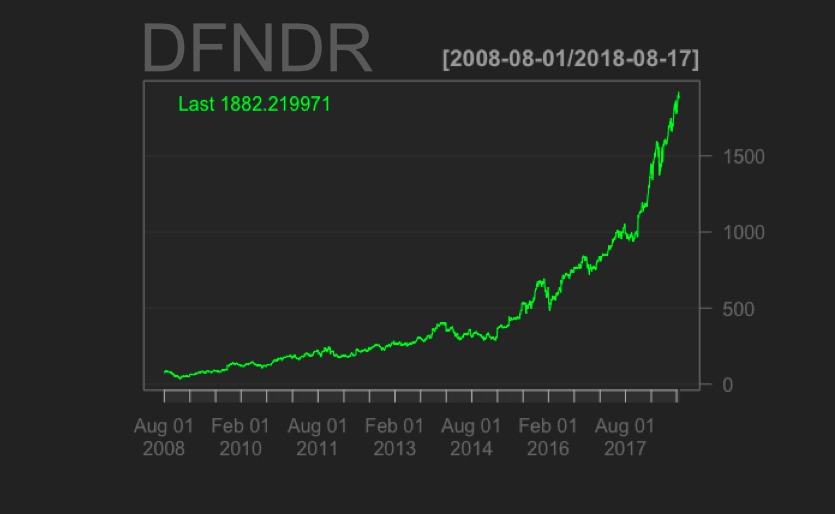You want a Defender, badly. We understand why. But other than the fact that they are awesome, what other reasons are there to buy a Defender? How can you justify it to your significant other, who just may not be as enamored with the thought of owning a vehicle slightly more comfortable than a horse-drawn carriage? Is there any logical reason to do so?
There is: buying a Defender is an investment and a smart one at that! Imagine buying a vehicle that didn’t lose value year over year, and instead, gains in value, especially those for sale in Canada. Why? There are several reasons, and all of them add up to Defenders being a solid investment that even your banker will agree with.
- Rarity. In the entire production life of the Land Rover Defender and Series, spanning over 68 years from 1948 to 2016, only 2 million were made. However, since the model that is known as “the Defender” was released in 1983, there have been approximately 600,000 made. Considering that there were over 250,000 Jeeps Wranglers sold last year alone, you start to understand the relative scarcity of Defenders. And that’s the other thing. They stopped making them in 2016, with the exception of the 70th-anniversary edition, which aren’t even new Defenders, but extremely well refurbished and expensive vehicles. They aren’t making any more Defenders. It’s like Deboers telling the world they decided to stop producing diamonds. What would happen to the value of the ones already produced?
- Intrinsic Value. One of the serendipitous circumstances that became part of the design specification for the Defender was the condition to use the stockpiled, leftover and scrap aluminum from the planes of world war one. It just so happens that all the properties of aluminum that made it so desirable in the air only became appreciated for use in vehicles lately – it is extremely light and rust free. This gives Defenders a raw value that won’t disintegrate before your very eyes like other classic vehicles. The chassis, however, is another matter entirely… but we will get to that later.
- Popularity. James Bond drove one. Steve McQueen had one. Richard Hammond (of Top Gear) hasn’t crashed one yet. Very few vehicles capture the “Cool Britannia” spirit as much as the Land Rover Defender. And besides its hip heritage, the entire SUV/Crossover vehicle segment is red hot. Even Ferrari is planning on making an SUV. Jeep Wranglers are becoming the go-to vehicle of the soccer mom. So its obvious that the value of one of the granddaddies of SUVs would be ripe for a resurgence. Especially once the “New” Defender will be announced and shown in 2019, there will be a tidal wave of interest as millions of people will be exposed to the Defender brand, and no doubt discover it’s much, much cooler origin. Like interest in the original Beetle, Mini Cooper and Fiat 500 spiked when it’s modern-day successors were announced, there is little doubt the same will happen to the Defender.
One of the additional reasons why especially Canadian Defenders are a great investment is that they are eligible to be imported into Canada when they are only 15 years old. Canada is one of the few countries where Defenders were not originally sold that allows them to be imported so young. However, they can only be imported into the US, our neighbour to the south, after they are 25 years old. That means that while Canada is a relatively small market, every year a Defender approaches 25 years old, that’s 1993 at the time of this writing, it comes one year closer to being eligible for export to the US, which is a massive, untapped market with an insatiable thirst for big, cool, off-road vehicles. If you think the market prices for Defenders in Canada are crazy, just take a look at prices in the U.S. It is not uncommon to see them being sold at over 100,000 US dollars, almost double what they sell for in Canada. So every year your Defender gets closer to 25 years old, it appreciates exponentially in value. Of course, there are some conditions that are needed for a Defender to maintain its value. First, the US is very strict about which vehicles are admitted into the country. Chassis swaps with old Land Rover Series won’t make it, and in fact are regularly and unceremoniously crushed at US customs impounds. The original frame with VIN must be present, as well as the original motor, in order to pass EPA. That is why, instead of swapping out rusted frames for import to Canada, we search for sound, rust-free chassis that we then strip and protect, either with PolyUrethane (Line-X) paint, WaxOyl or Hot Dip Galvanizing, with the original VIN intact and visible so that when your Defender turns 25, it becomes eligible for export to the U.S. of A.
Which brings me to this ad on Autotrader:
 That was one of the first complete frame-off restorations we did on a Defender, a 1991 US Eligible Defender 90. We sandblasted and polyurethane coated the frame. We replaced every bolt with stainless steel. We replaced all the hoses with silicone. Rebuilt the drivetrain and repainted it. And after all was said and done, we imported it and sold it in Canada for $40,000 CAD. Not even six months later, the new owner listed it for $65,000 CAD. If he gets his asking price that will be a 62.5% appreciation in value! Can you say the same thing about the Defender’s bigger, but younger, brother – the Range Rover, with a 58% 5-year depreciation rate?
That was one of the first complete frame-off restorations we did on a Defender, a 1991 US Eligible Defender 90. We sandblasted and polyurethane coated the frame. We replaced every bolt with stainless steel. We replaced all the hoses with silicone. Rebuilt the drivetrain and repainted it. And after all was said and done, we imported it and sold it in Canada for $40,000 CAD. Not even six months later, the new owner listed it for $65,000 CAD. If he gets his asking price that will be a 62.5% appreciation in value! Can you say the same thing about the Defender’s bigger, but younger, brother – the Range Rover, with a 58% 5-year depreciation rate?
So, armed with this argument, we are confident you should have no problem convincing your better half, with controls on the purse strings, that the Defender you want is not only a purchase of the heart but a very sound, logical investment strategy!
Ready to invest in a Defender? Check out the Defenders we have for sale and get in on the ground floor, now!
